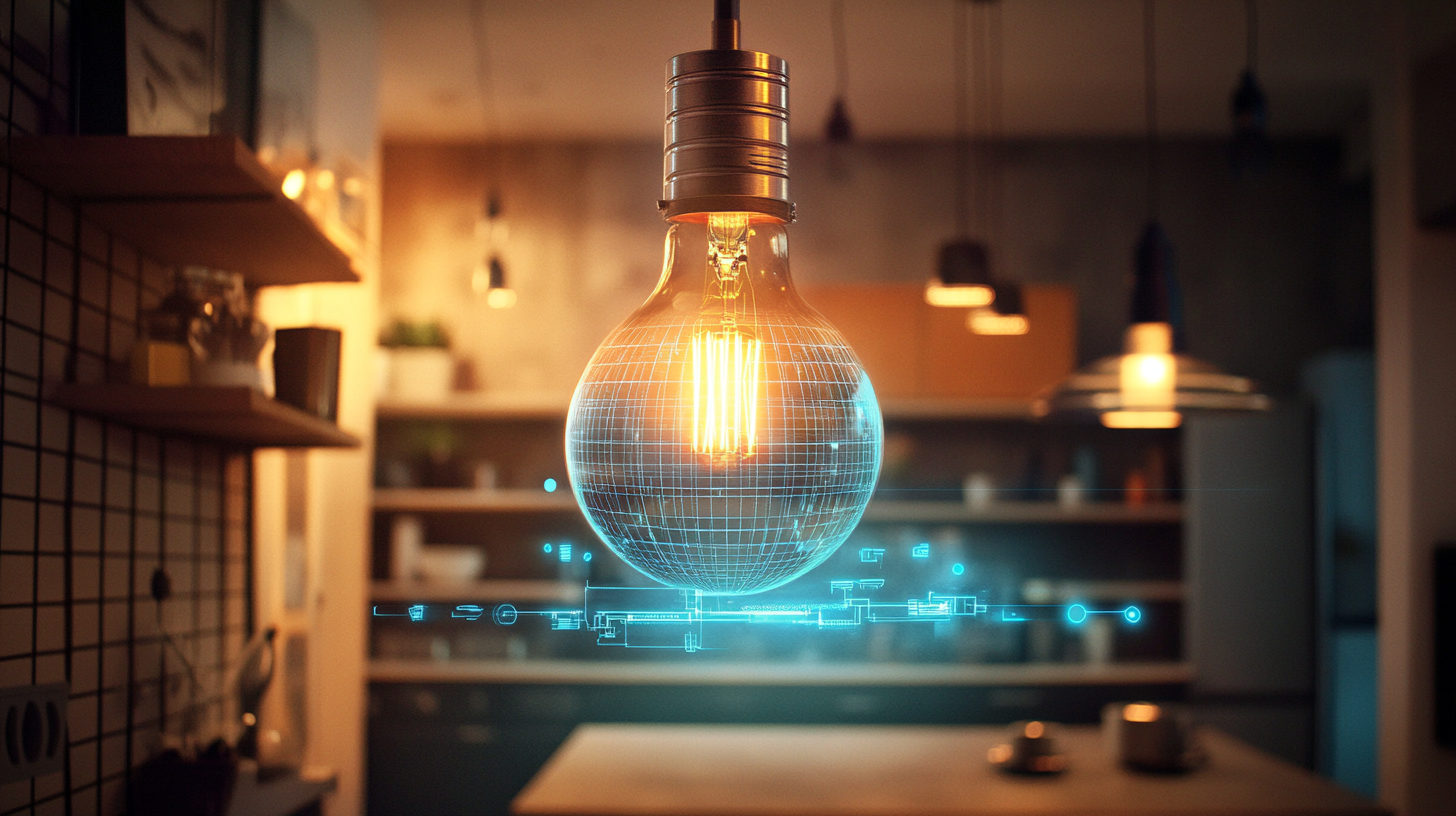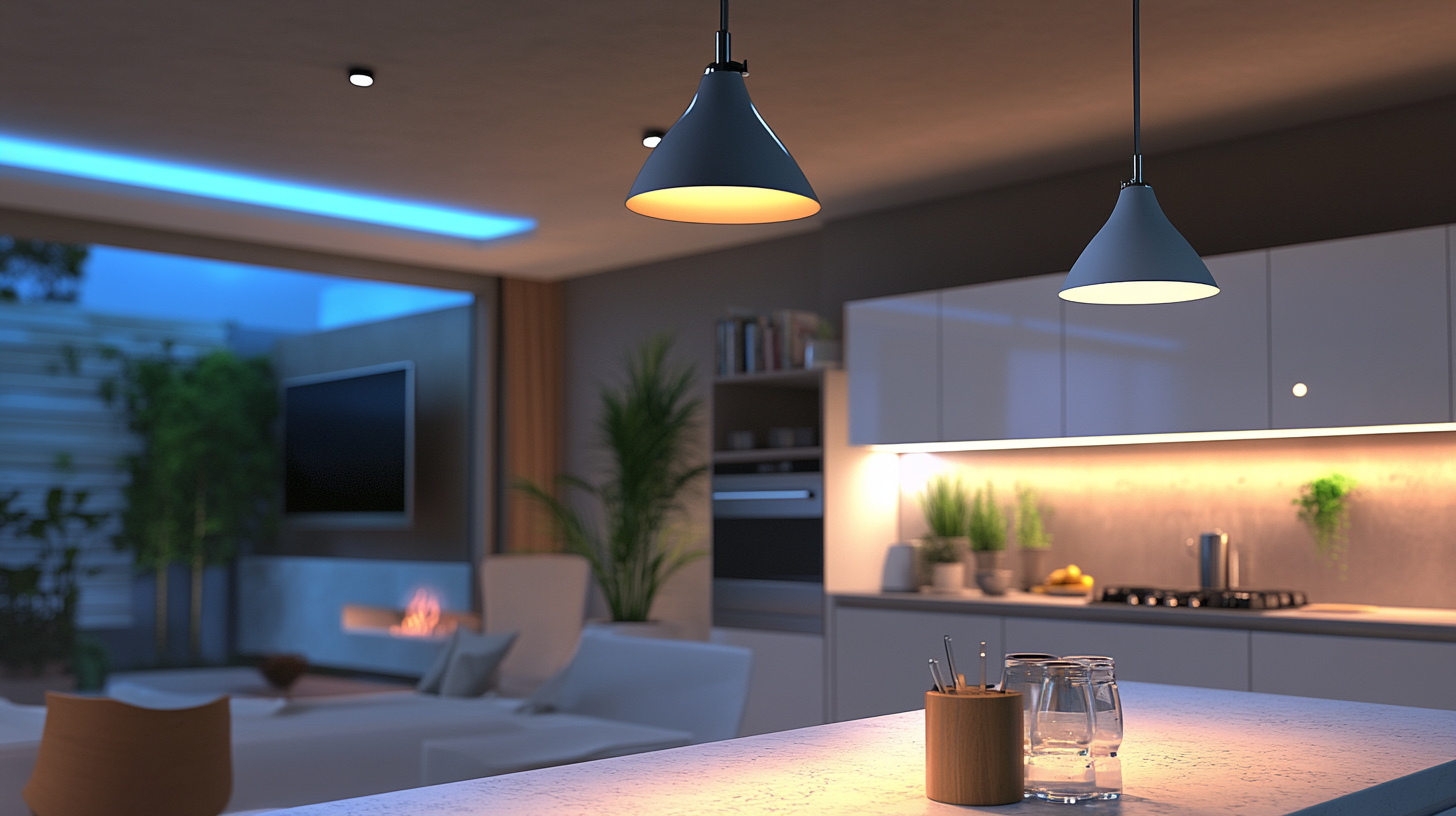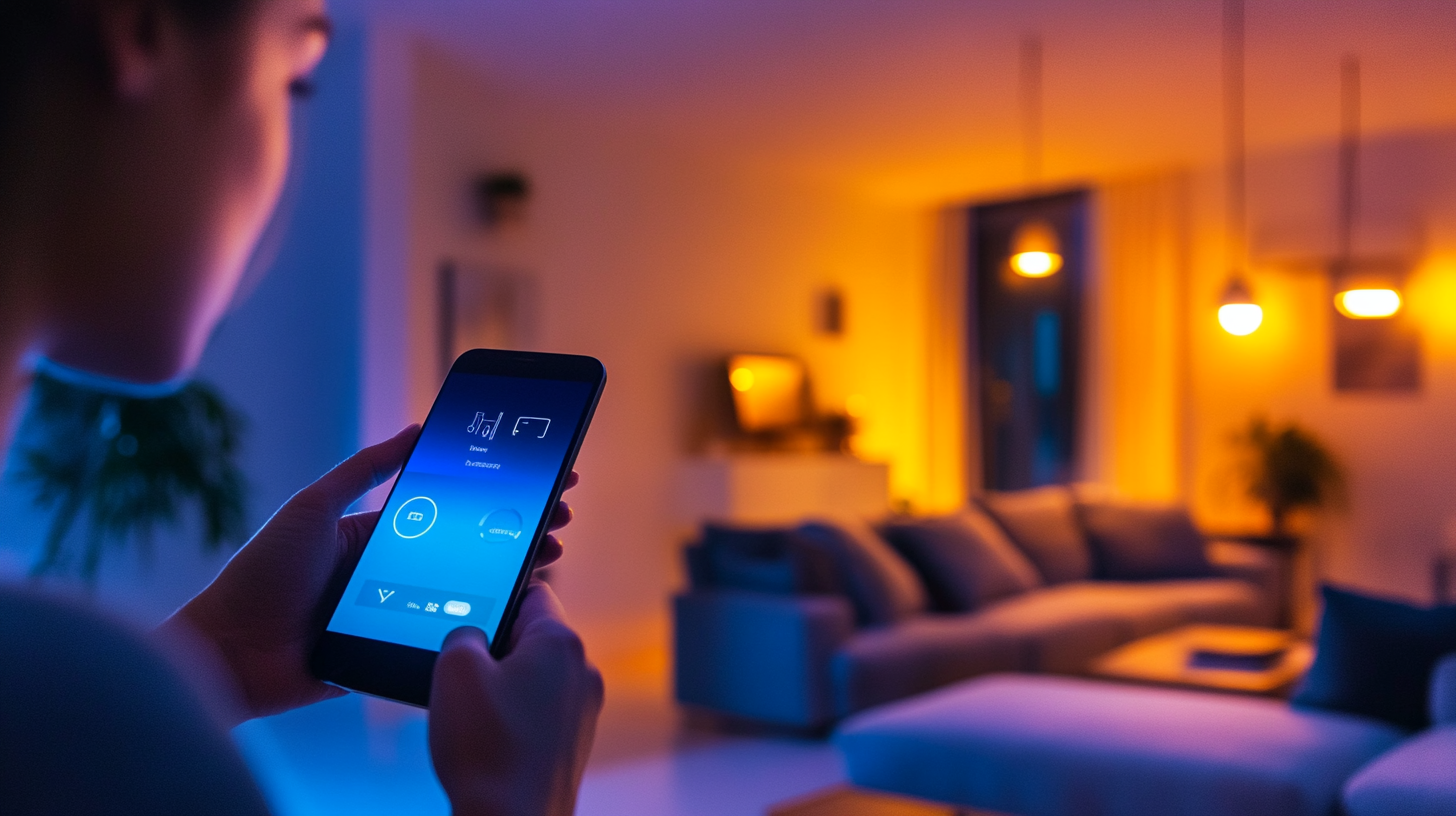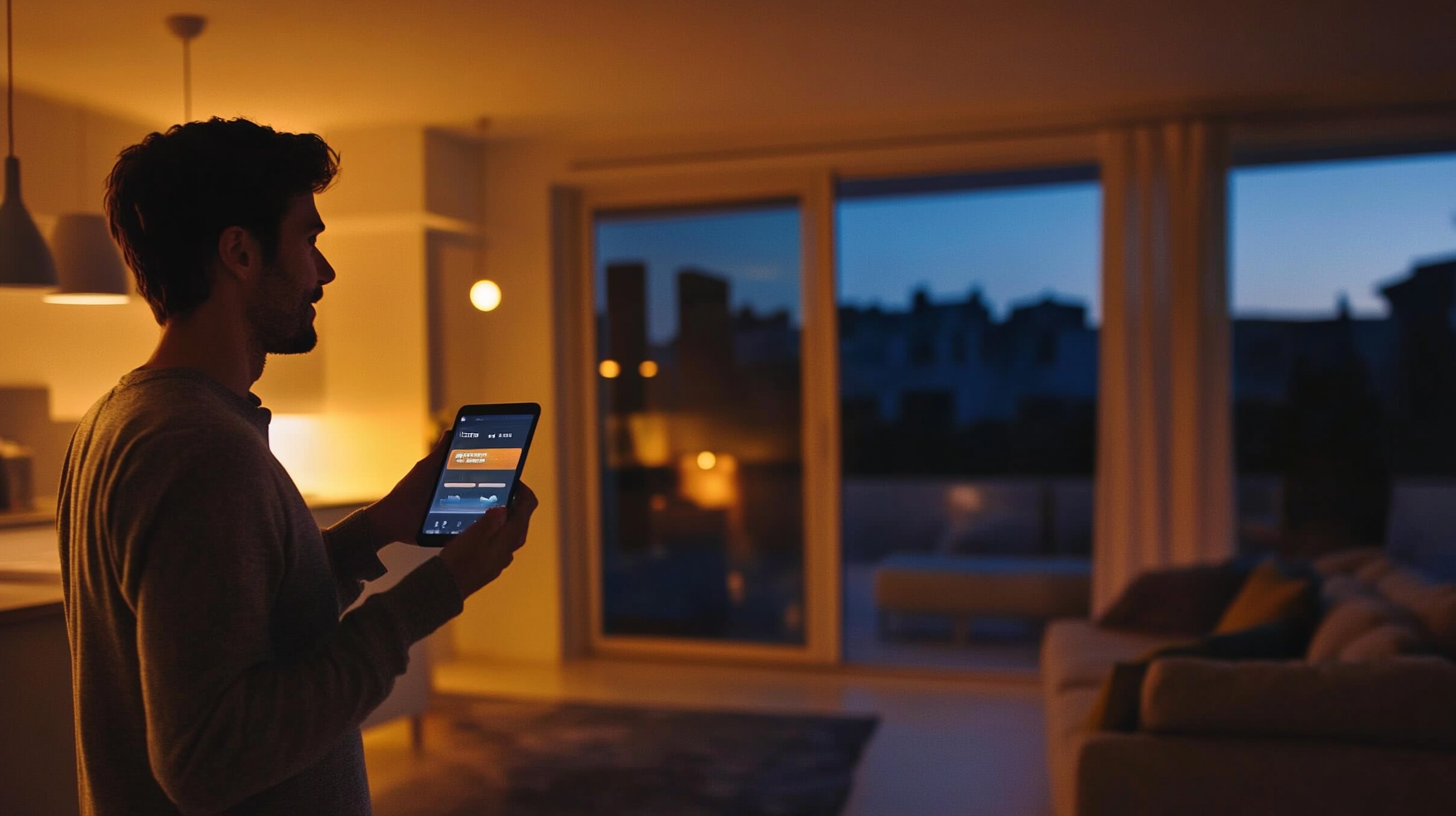Unlocking Energy Efficiency: Key Technical Features of Smart Lighting and How to Optimize Your Setup
As demand for energy efficiency is rising across the globe, the adoption of Smart Lighting will especially prove to be more efficient for residential and commercial environments. According to the reports provided from the International Energy Agency (IEA), smart lighting technologies could help save up to 50% of the mankind's total global electricity consumption for lighting by 2040. Such a dramatic drop means savings, of course, but also the fulfillment of higher ends, such as sustainability and environmental protection. Smart Lighting systems are a good example of an aide in energy savings and improvements for the user through integration with advanced features such as occupancy sensors, adaptive brightness, and remote operation.
Additionally, the new Markets and Markets research states that the smart lighting market will touch dollar 36 billion revenues by 2024. This indicates well with the enhancement of intelligent lighting infrastructure. By their real-time data analytics and IoT interconnection, Smart Lighting will optimize illumination according to occupancy patterns and lumen availability from sunlight, making it a more efficient use of energy. Additionally, this blog will focus on the technical features of Smart Lighting, showing how best these systems are implemented and maximized in different environments for energy efficiency and user satisfaction.

Understanding the Basics of Smart Lighting Technology
Smart lighting technology has rapidly advanced for energy conservation and user convenience. At its core, smart lighting involves LED lights that are equipped with enabling sensors and connectivity features to react to assorted environmental conditions and user preferences. In essence, this technology empowers the remote control of lighting systems through mobile phones or smart-home devices, not just offering convenience but also facilitating more effective management of energy usage. Essentially, smart lighting reacts to occupancy and the natural light available by adjusting the brightness and color temperature. Thus, rooms with plenty of sunlight during the day will see their smart lights dim all to cool or remove color to save energy. Other features, such as motion detection, ensure that lights are turned off when they are not required, aiding in energy conservation. A key area involves integration with automated home systems. Smart lighting can be programmed to respond to a number of variables, such as the time of day, user habits, even when certain devices are on or off. These contribute to the user experience while also assisting with energy management, thus encouraging energy-saving practices into everyday living. Understanding these basic principles will go a long way toward helping users establish a set of smart lighting technologies for themselves and hence a practical energy-efficient and comfortable environment.

Key Benefits of Implementing Energy-Efficient Smart Lighting
Sustainable energy-efficient smart lighting installations are not trends; they are significant steps toward meeting sustainability goals like carbon peak and carbon neutrality. As reflected in recent news, in which over 700 schools in Shanghai deploy AI-powered lighting systems, the latest forms of technology increasingly become more necessary when it comes to lighting. The systems provide not only energy efficiency but also a great opportunity to factor emissions reduction into both urban development and climate strategy.
According to a study from the Department of Energy, smart lighting can cut energy consumption as much as 75% compared to traditional lighting systems. Adaptive lighting, adjusting brightness according to occupancy levels and available light from outside, is one of the vital components in this energy-saving strategy. Smart sensors with IoT also set real-time monitoring and management of energy usage that create normalized performance and lower operation costs across commercial buildings.
In addition, energy-efficient smart lighting may energize the workplace and learning environment. Workplace dynamic light attributes to a 20% increase in employee productivity according to the McKinsey report. Classrooms with good lighting favor a climate that is more supportive of learning in the educational environment. Thus, the merits of economizing on energy via introducing energy-efficient lighting solutions go beyond energy savings, as these solutions have also proved beneficial for well-being and performance in other areas.

Essential Features to Look for in Smart Lighting Solutions
This discussion focuses on energy efficiency and user satisfaction in the context of smart lighting solutions. One of the most important features could be adaptive lighting technology, which provides brightness modulation according to the amount of ambient light. According to the US Department of Energy, efficient management of lighting systems can save energy consumption up to 30% and stands out in importance to integration with natural light sources.
Another important feature for consideration is giving smart lighting the ability to be controlled wirelessly. Users can easily customize how they want their lighting to be using app-based control or voice-activated systems. According to a report from the American Council for an Energy-Efficient Economy, smart lighting can save energy consumption by up to 20% because of better scheduling and use of sensors. This saves energy in addition to making life much more convenient, whether at the user's home or anywhere else.
Good compatibility with smart home systems is also quite critical in enhancing a seamless user experience. Incorporating smart lights into such common frameworks as Google Home or Amazon Alexa vastly enhances the value, as homeowners will construct their routines and automate their lighting choices based on their own lifestyles. Industry figures show that homes within a smart home ecosystem are expected to see an average annual reduction of as much as 15% in energy bills. These characteristics would enable consumers to appreciate the virtues of smart lighting so that they could make appropriate decisions toward the best optimization of their smart lighting setups.

Best Practices for Optimizing Your Smart Lighting Setup
This is how much one would have to know about household best practices to optimize smart lighting in energy efficiency and user experience. According to the U.S. Department of Energy, lighting consumes approximately 15% of the average household electricity. A custom, smart lighting-based system can substantially cut this down.
One of the excellent strategic cuts for smart lighting optimization is placing motion and ambient light sensors in the lighting. These features allow lights to illuminate based on whether a space is occupied as well as how much natural light is available. According to a report from the international Energy Agency, smart lighting can generate up to 30% of the energy savings when well incorporated into the commercial category. So the system will not only save energy but also prolongs the life of your luminaires.
Centralized control systems such as smart home hubs or apps for the phone would help consumers to control lights even easier. Programming schedules and specific scenes for activities improve energy efficiency and benefit from easier operation. According to research, homes with smart lighting could save even up to 50% of energy consumption in lighting and could achieve this further with LED technology, which consumes about 75% less energy than incandescent bulbs.
Finally, carry out a regular audit and assessment of your smart lighting system for optimization potential. The Energy Star Program recommends light levels and energy use be evaluated periodically to ensure that you are getting the most out of your current environment and lifestyle needs. Adjustments can fully unlock the potential of smart lighting in sustainability as well as cost savings.
Future Trends in Smart Lighting and Energy Efficiency
It is not merely about light in the arena of smart lighting, but in fact, the backbone of energy efficiency in residential and commercial space. Future trends have no doubt shown a gradual shift in promoting intelligent systems that are adaptable to users' needs and conserve energy. Recent reports indicate that smart lighting has a definite bright future, with the market projected to grow significantly, a factor led by improvements in LED technology and increased demand for energy-efficient solutions. Seemingly since 2023, smart lighting solutions have been integrated into everyday life, with China, the major producer of LED lighting technology worldwide.
Energy efficiency management in commercial buildings emerges as one of the most promising trends. By 2024, the global commercial energy efficiency management market is expected to reach nearly 299.3 billion yuan. The consideration of energy-saving technologies might be financially and eco-efficient for businesses; this means that companies have now started valuing the investment of energy-saving technologies with both lower operational cost and satisfying sustainability guidelines. Intelligent lighting solutions use occupancy and daylight availability to enable real-time control through climate and IoT sensors. Hence, new eco-friendly architecture would be paving its way.
This addition has allowed for AI to integrate into smart lighting and revolutionize energy management. AI allows for the extra predictive analytics to optimize lighting schedules and energy use with respect to environmental conditions and user patterns. This trend is consistent with the current global push toward ecologically sustainable practices as many countries ramp up environmental protection. Smart lighting is destined to be at the forefront of such innovations and will assist tremendously in energy-efficient futures.
